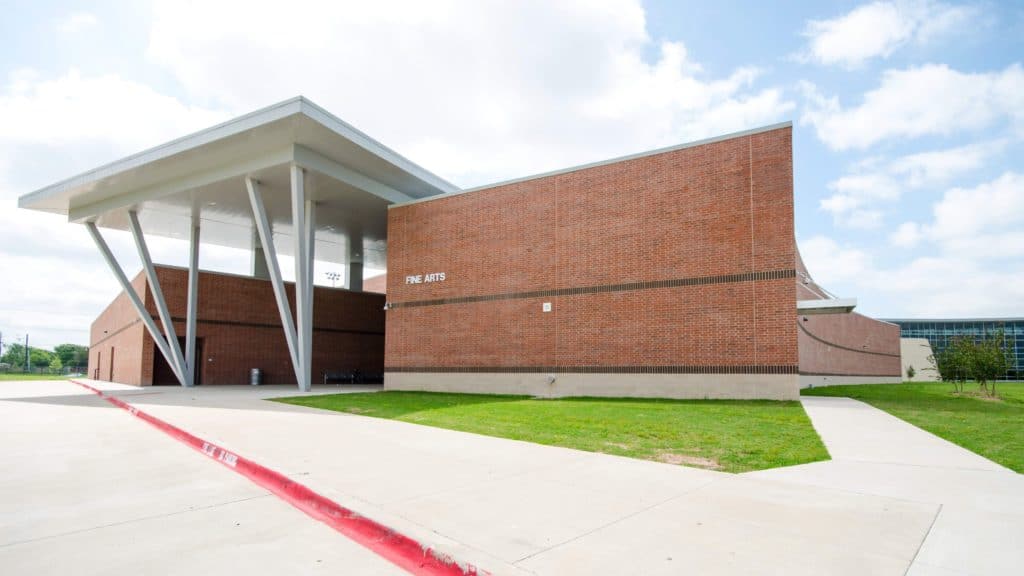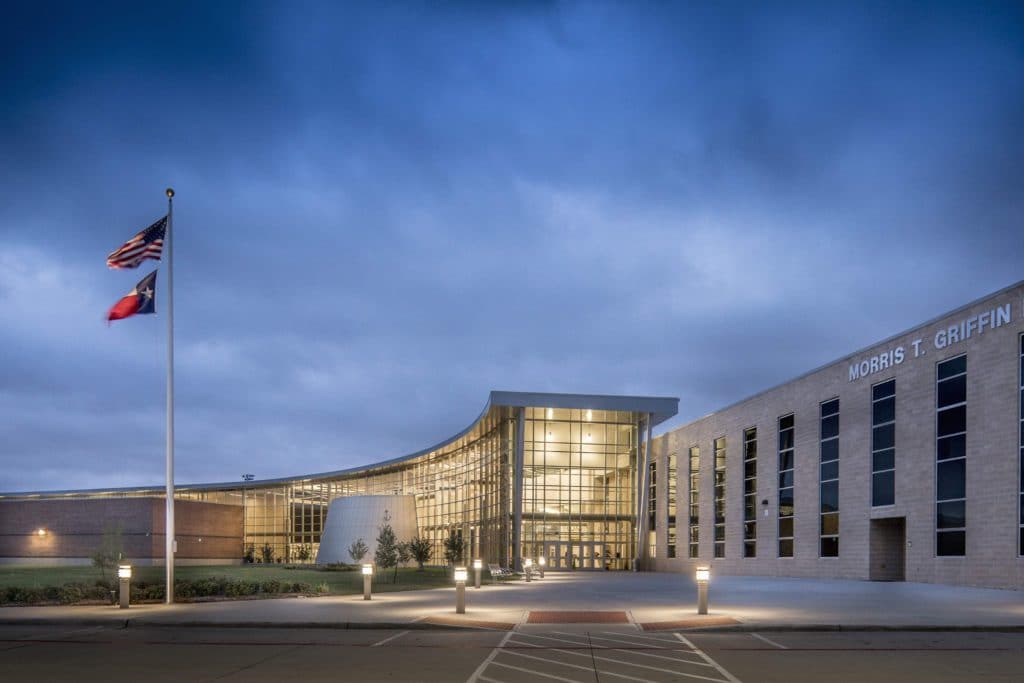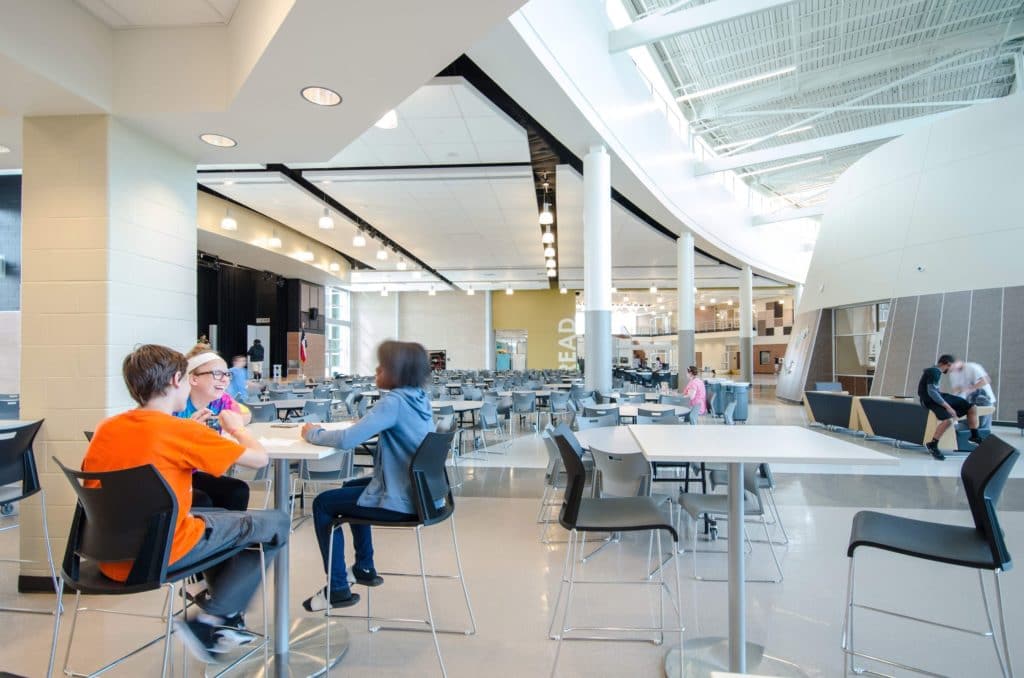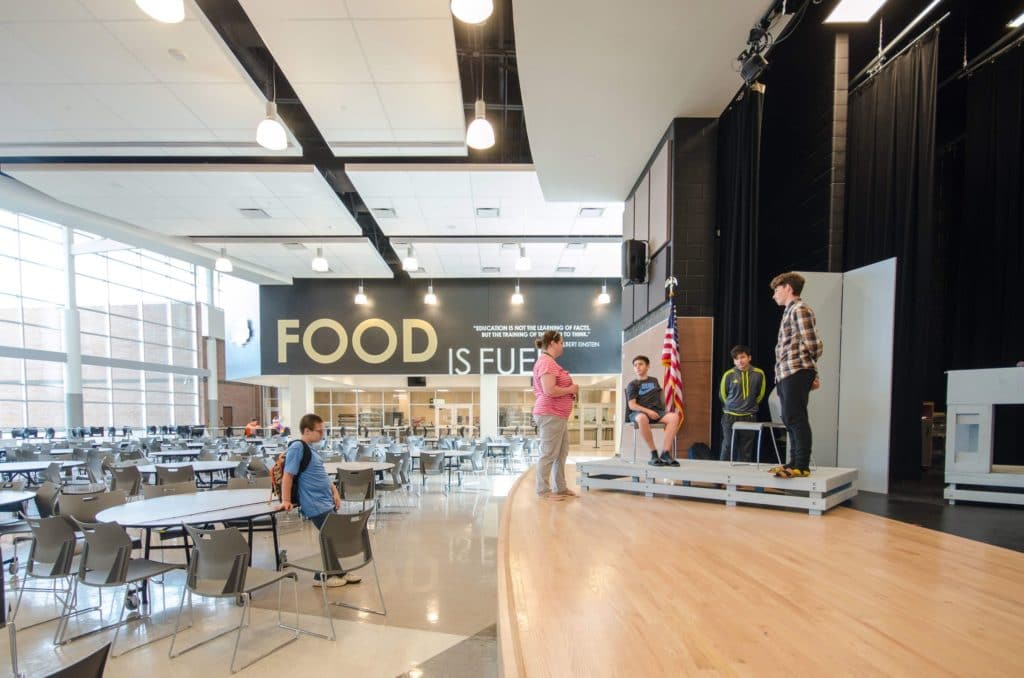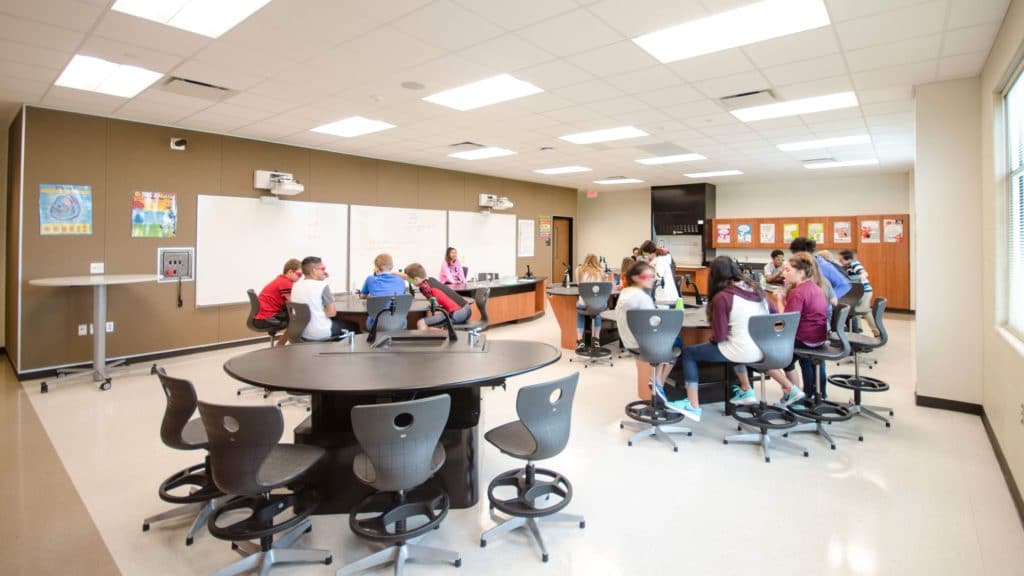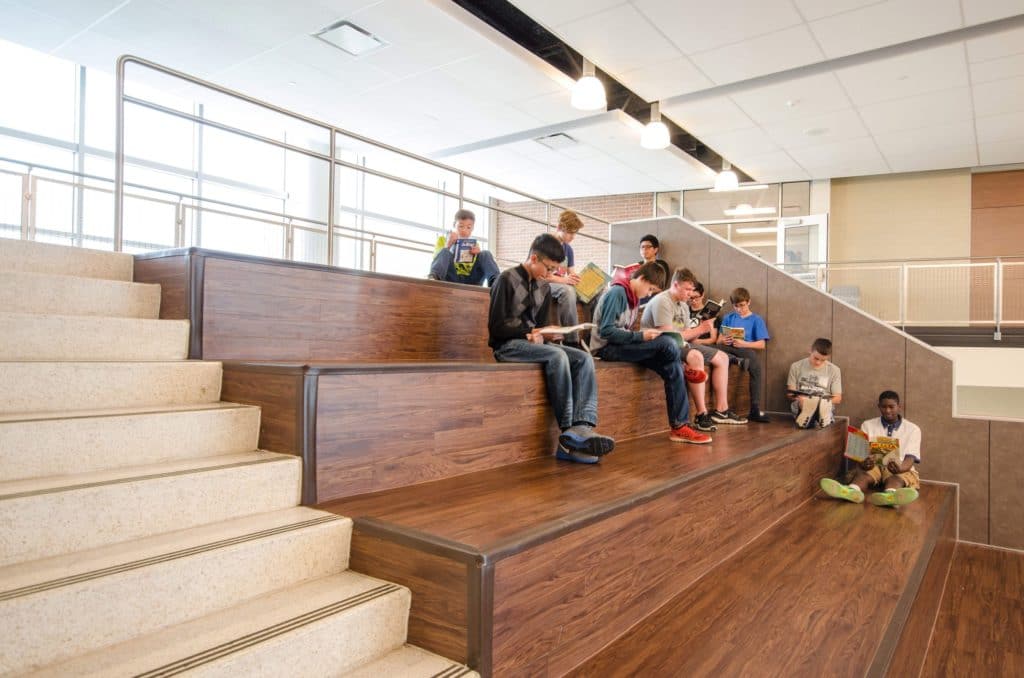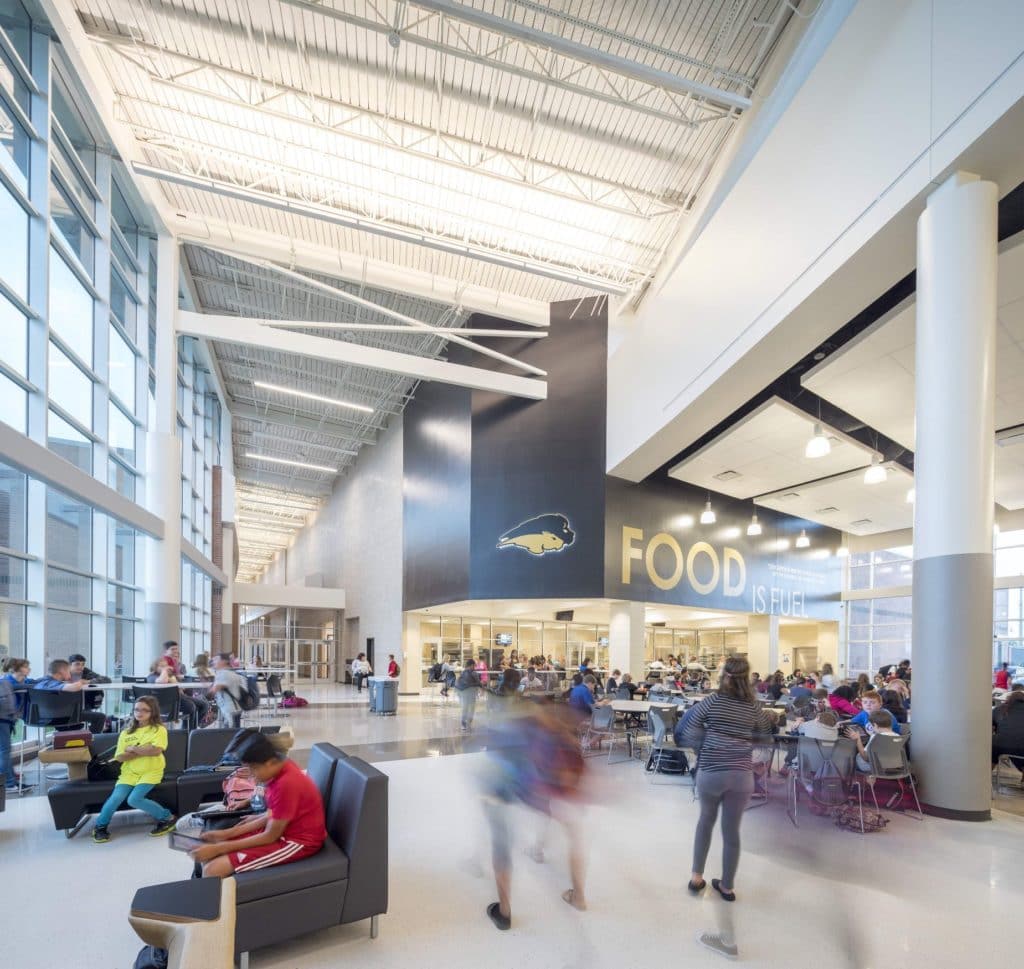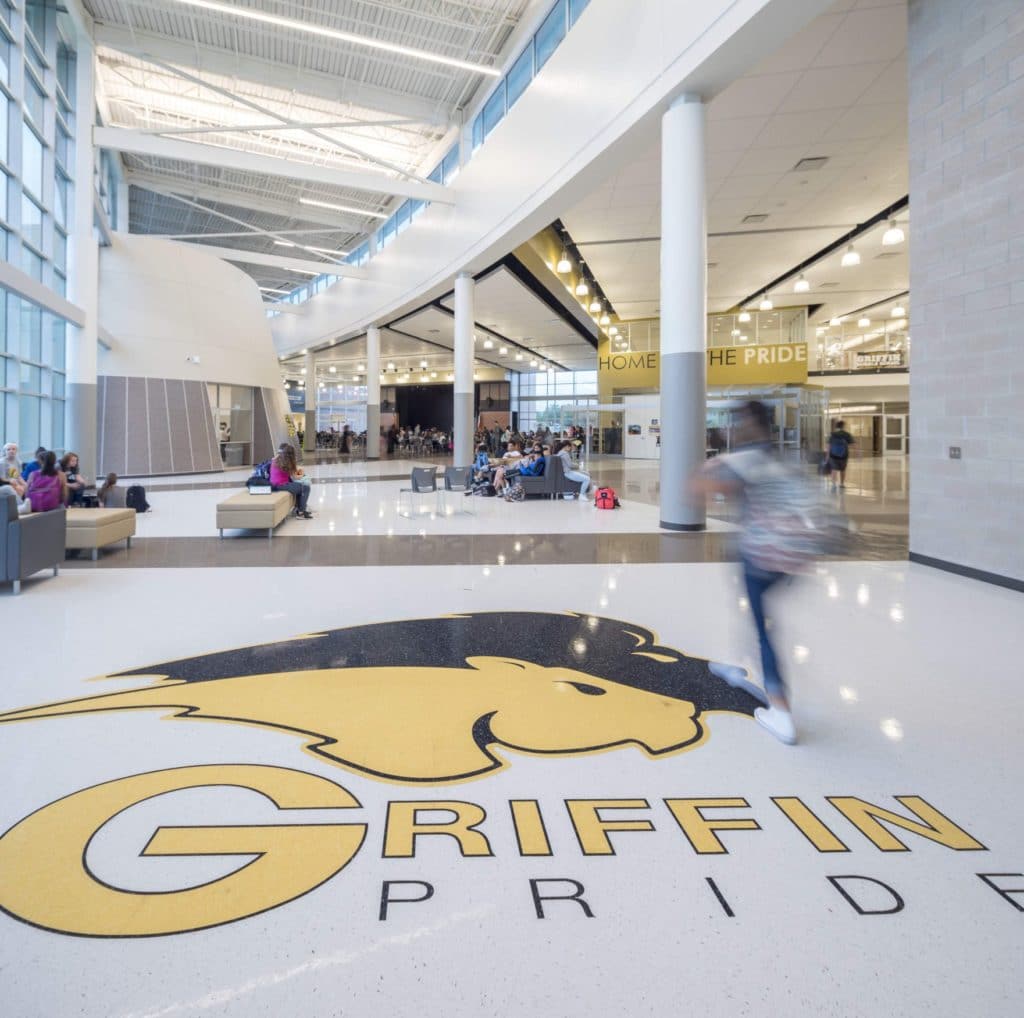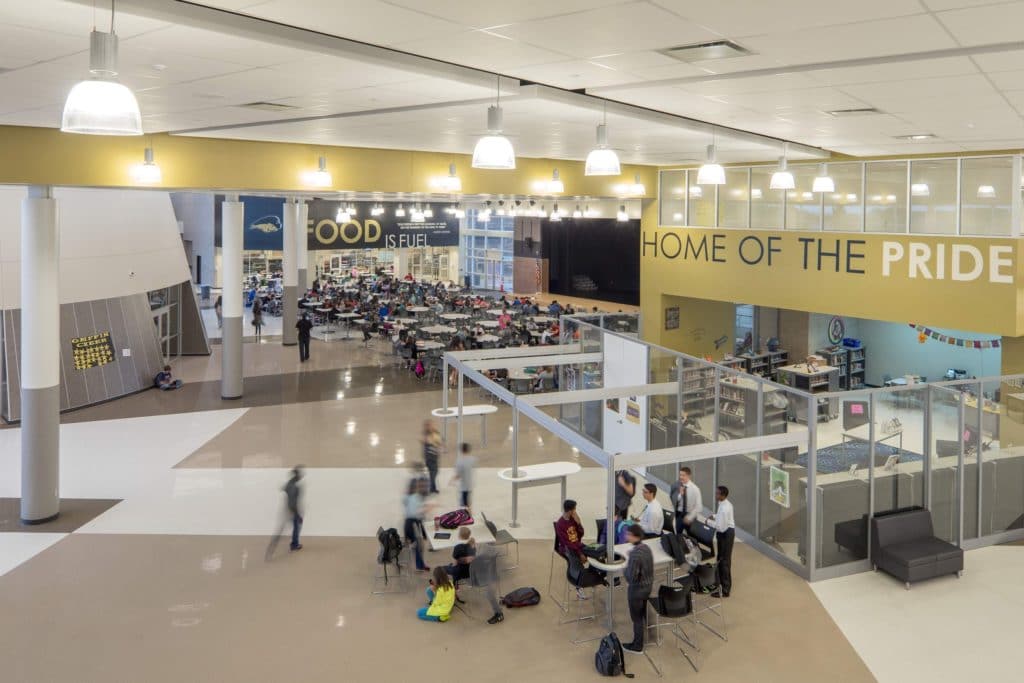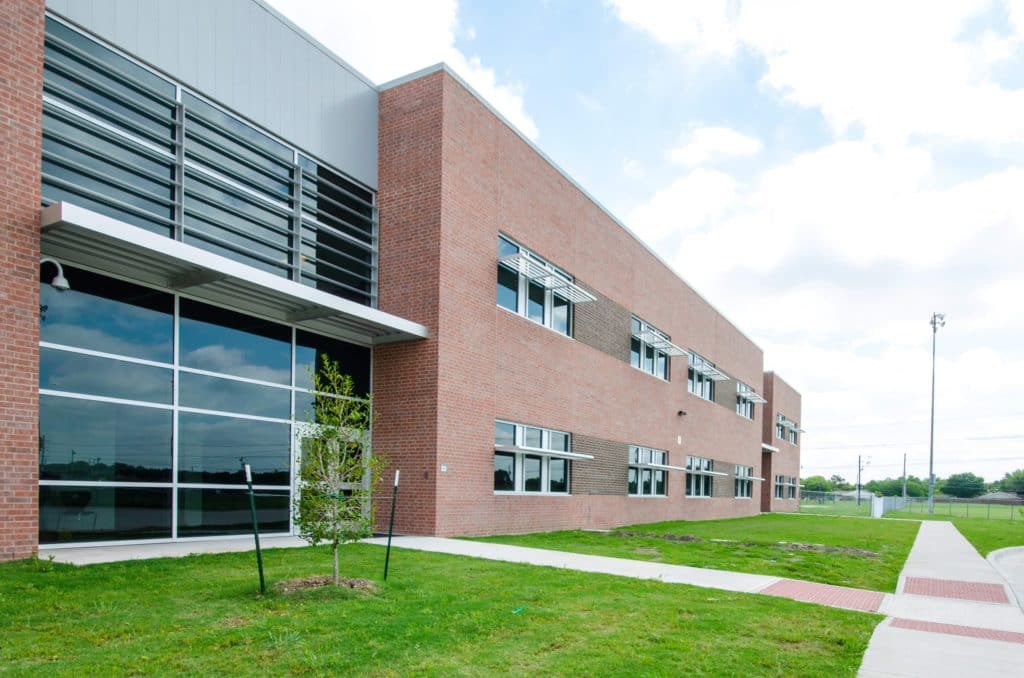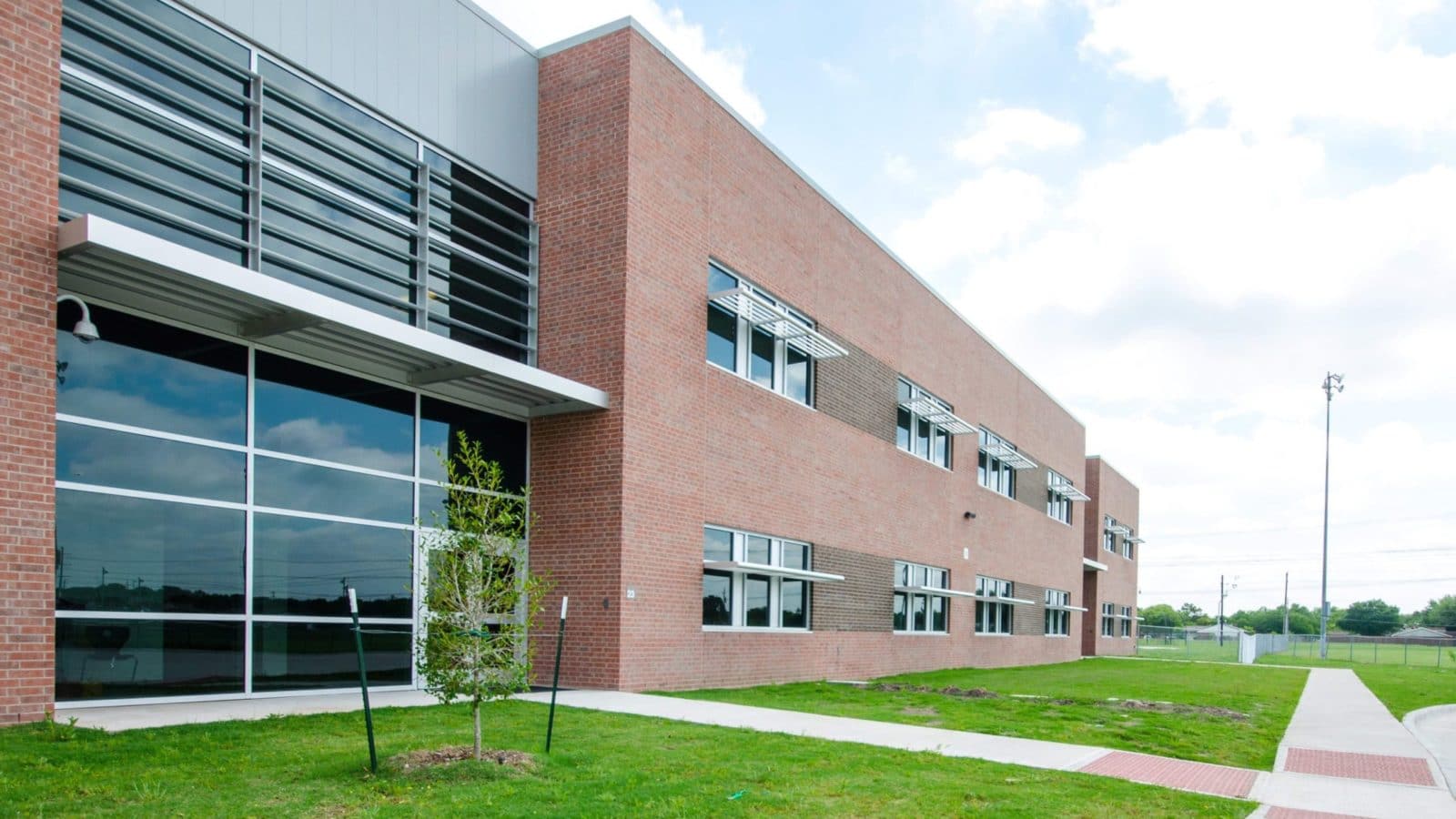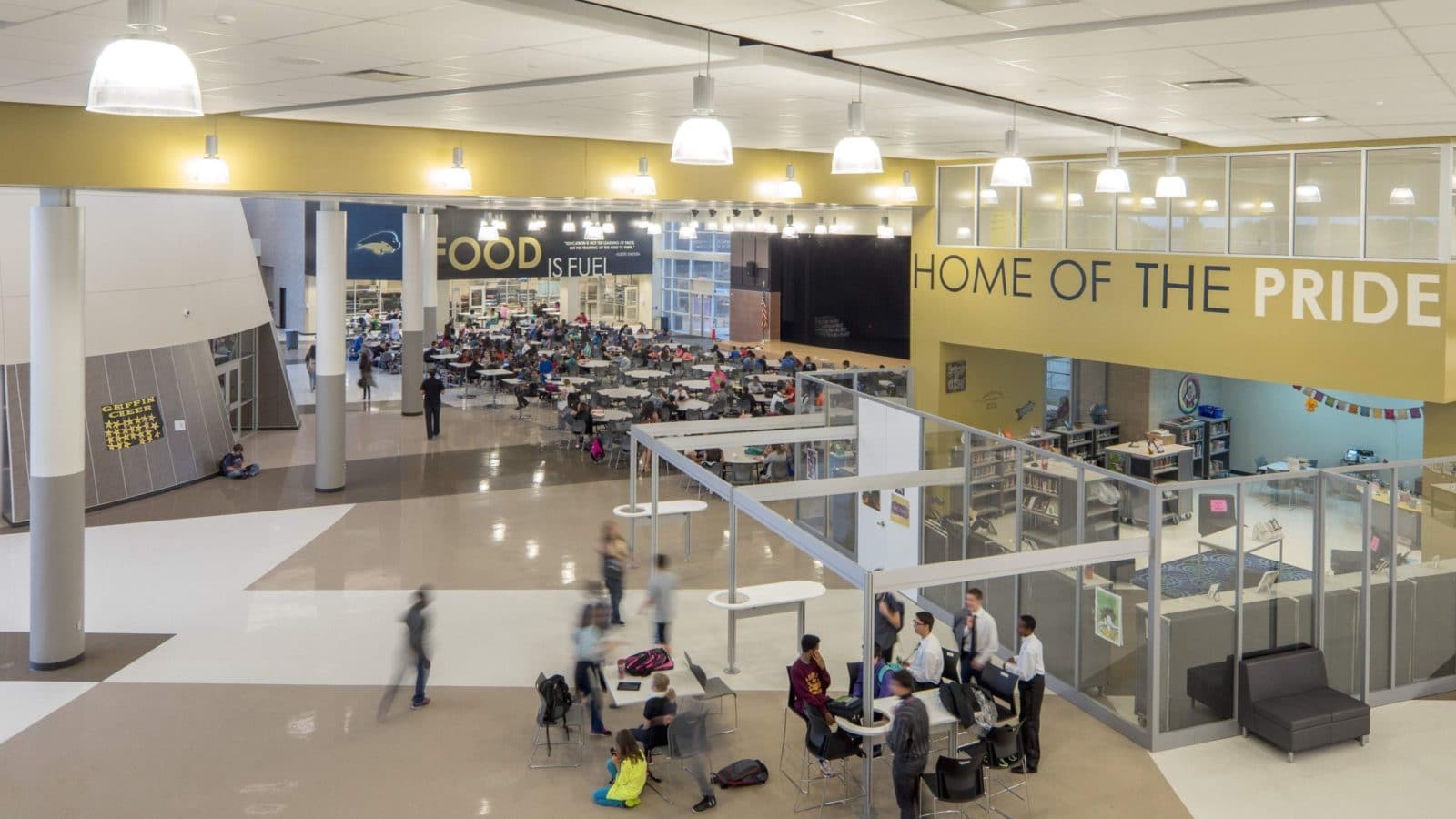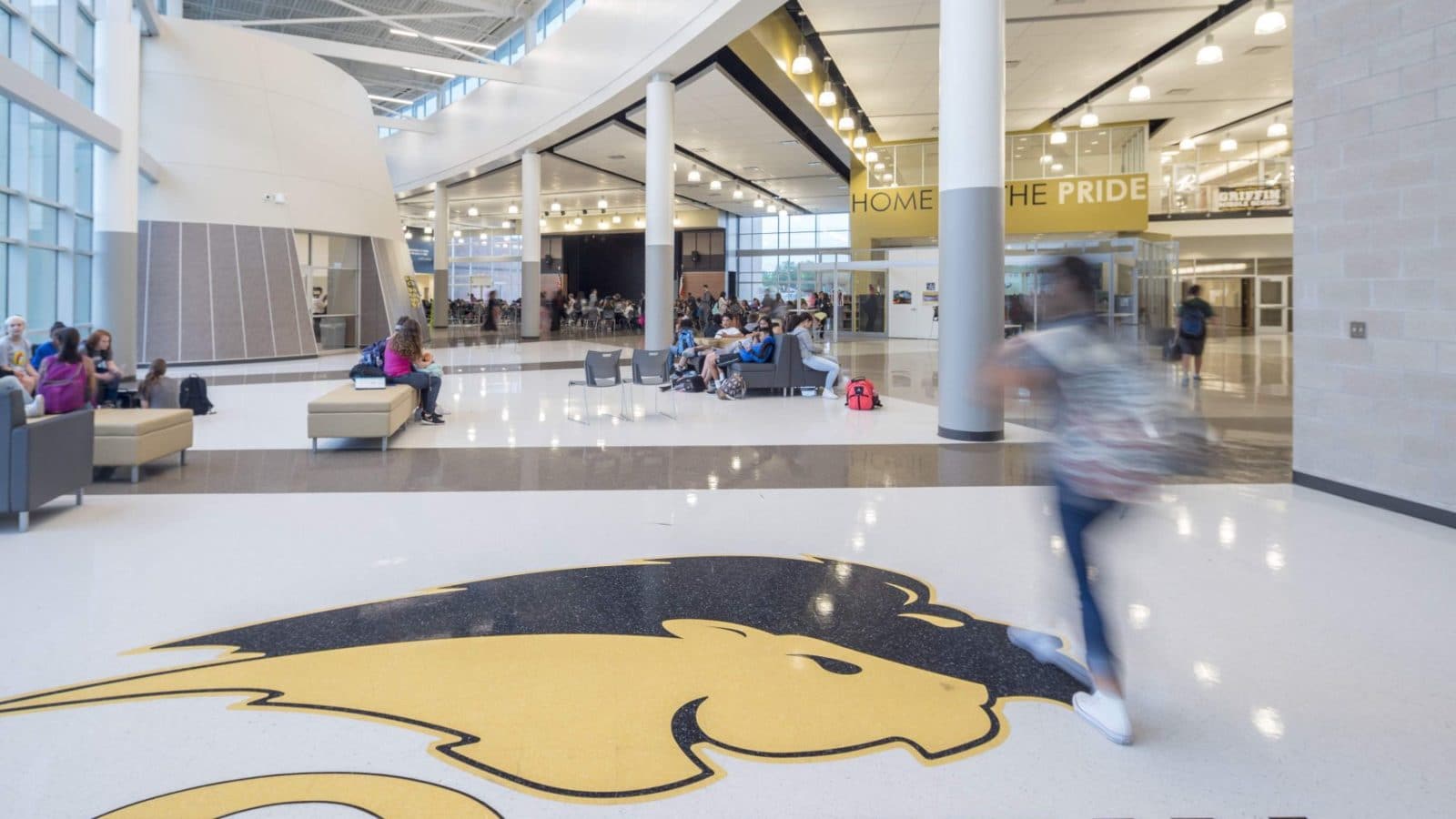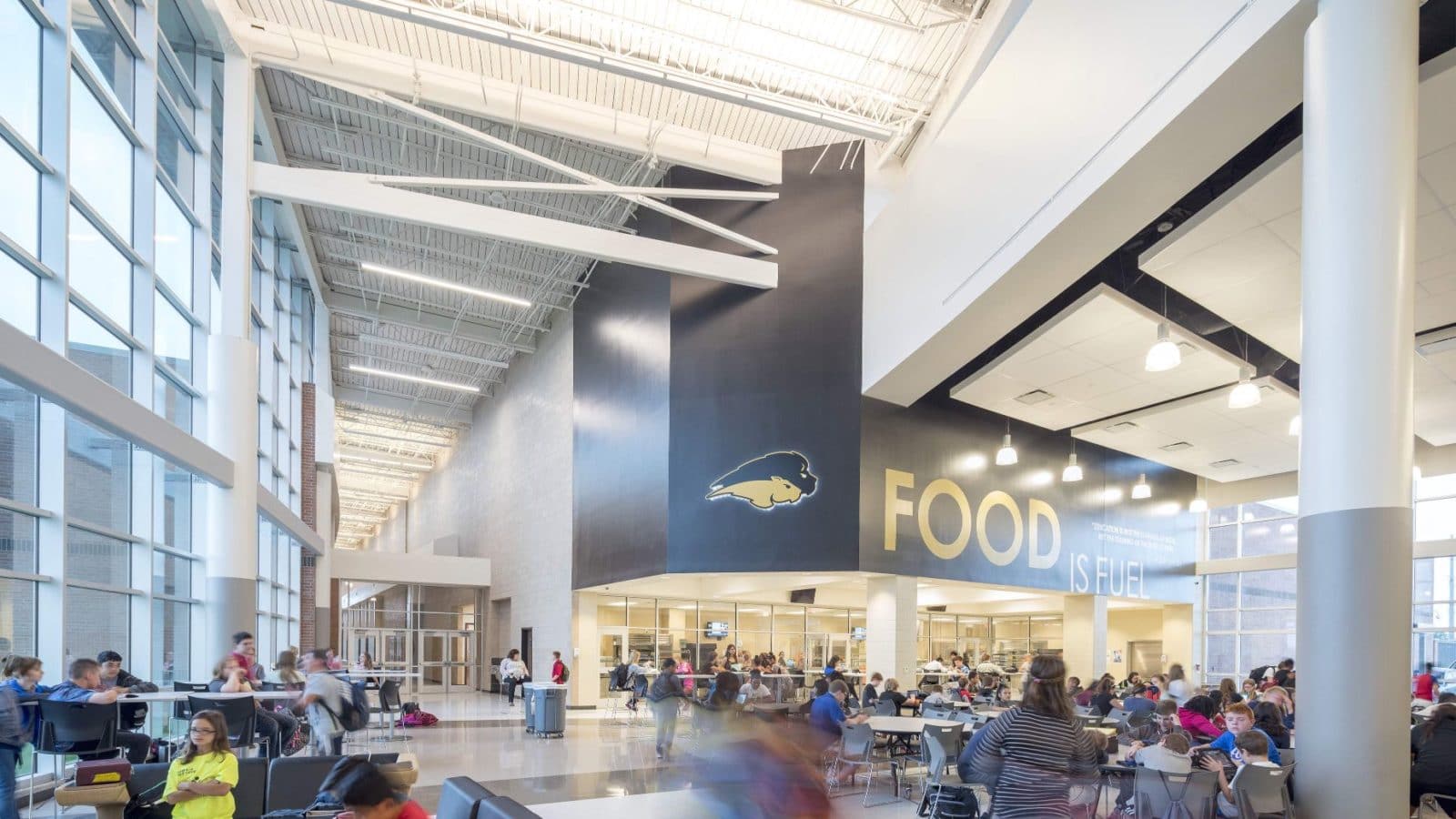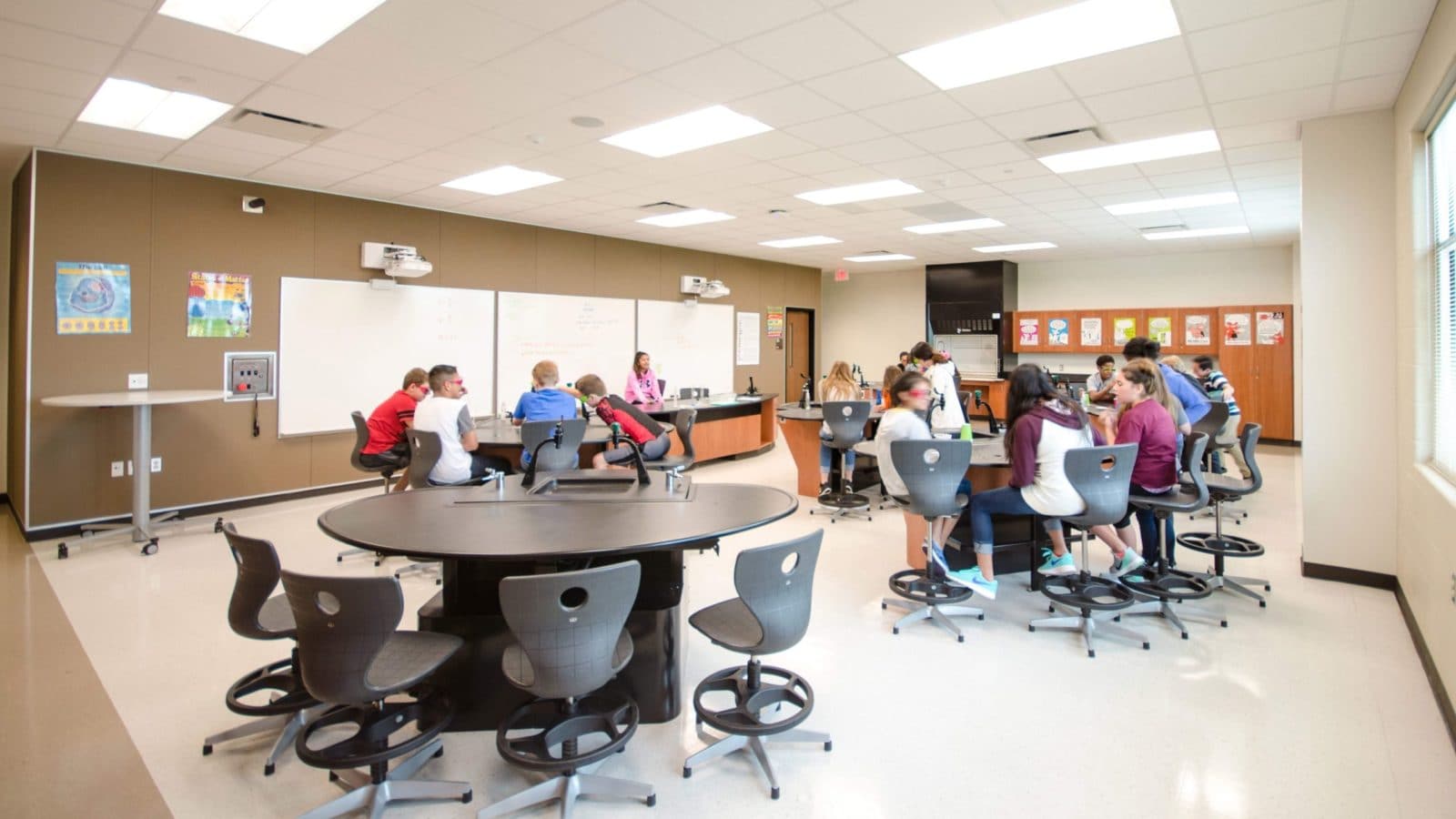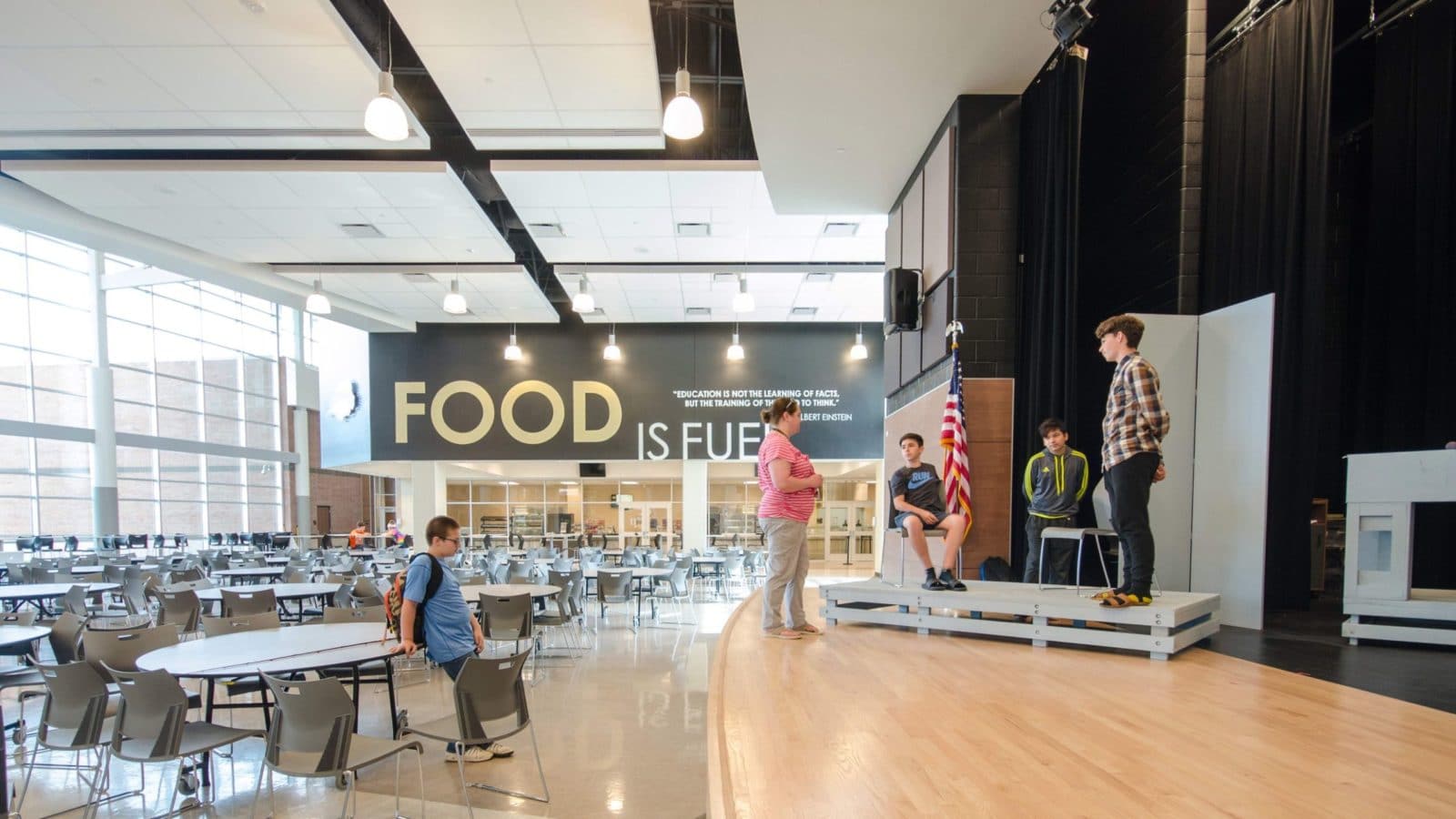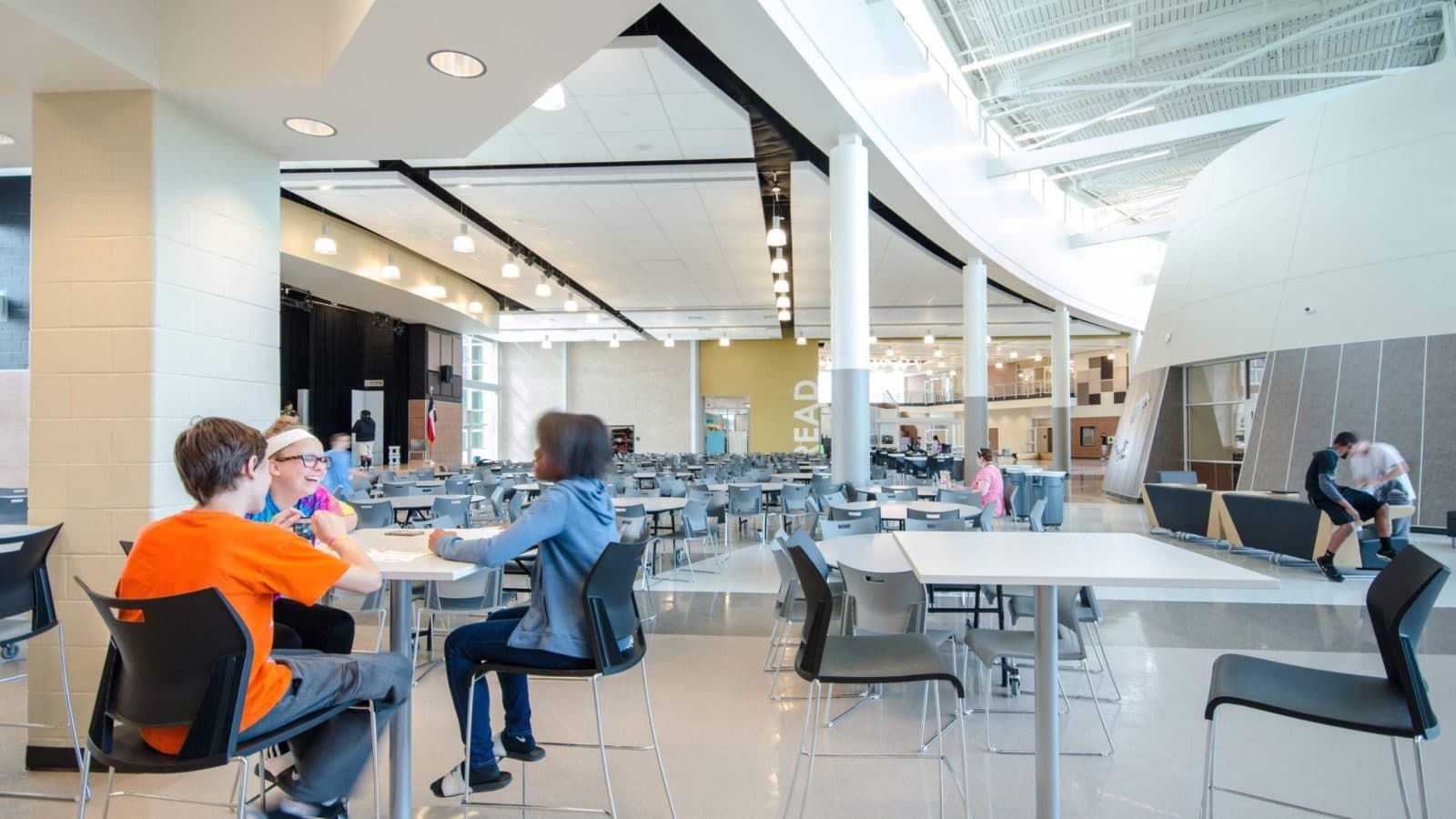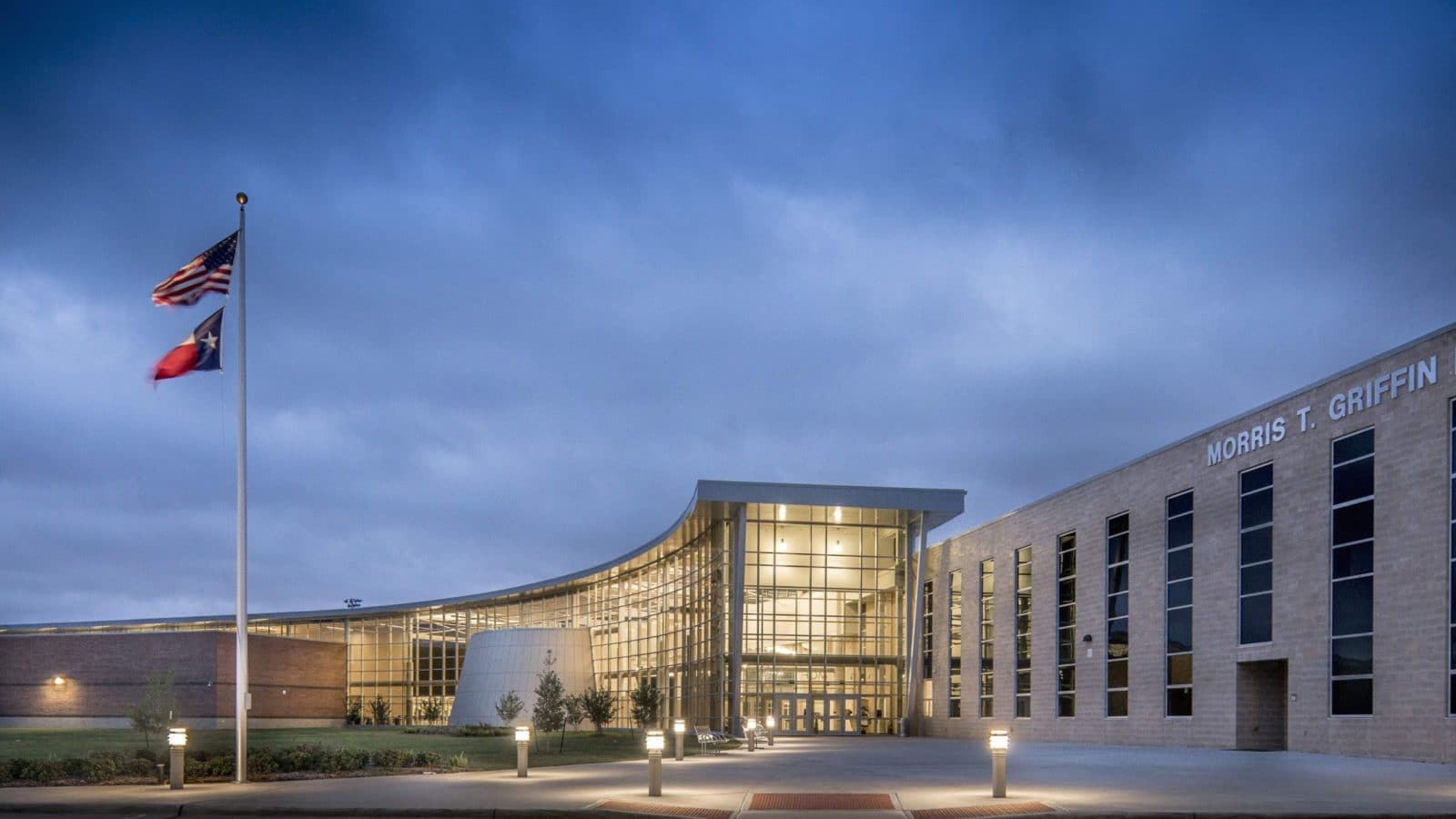To effectively accomplish the lofty objectives of the Strategic Design Initiative, the district engaged the community. They hosted community summits to start the conversation, followed by focus groups of students, parents, community members and district staff to expand on ideas and challenge old paradigms. Additionally, they published an online survey to gather additional community feedback, as they wanted the process to be transparent and inclusive. The process engaged more than 5,000 stakeholders and took nine months to complete.
PBK and the LISD Design Team masterminded a learning environment that enables a learning organization’s core disciplines of personal mastery, shared vision and team learning to thrive. By creating small learning communities within the school to support and nurture individual academic strengths, the design enables students to capitalize on self-sustaining growth. Within each community or learning organization, learners tackle individual learning activities as part of a team, which promotes mastery. In addition, the design capitalizes on the concept of lifelong learning by promoting opportunities for this to occur at all levels throughout the campus – for students, teachers, administrators, and parents. These spaces assume a variety of forms and shapes – from the large learning hub where many convene to learn and work together, to quiet areas (like the nook above the library) where opportunities to immerse oneself in learning is more private and personal.
Students learn through a variety of instructional programs, but the two most significant pedagogies are project-based learning and blended learning. During the strategic design process, students were asked “How do you like to learn?” From the answers received (and based on the parallel work of the strategic design team), the district decided that an active learning model supported by team activities would be the best form of curriculum delivery for students. Project-based learning accommodates this method, as well as supplying students with a relevant skillset to succeed in today’s society. To further support this, the district launched it’s 1:X initiative to provide students with a personalized learning experience. 1:X is a transformative installation of a flexible learning environment that gives students tools to access, create, share and collaborate as digital citizens.
